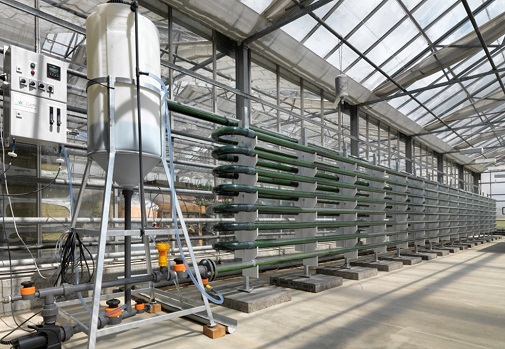Plant Power: Pharmaceuticals from sunlight and tobacco
Professor Poul Erik Jensen, Professor Birger Lindberg Møller and their research groups from Plant Power are demonstrating that it is possible to use tobacco plant chloroplasts to produce herbal Forskolin, which today is used in sleeping pills, diet pills and against heart disease.
Researchers at the University of Copenhagen's Department of Plant and Environmental Sciences utilize tobacco plant chloroplasts to produce herbal Forskolin, which is used in sleeping pills, diet pills and against heart disease. (Photo: Lennart Soegaard-Hoyer, Ingeniøren)
The trick is to transfer the synthesis pathway for forskolin from the original medicinal plant, named Coleus forskohlii, into tobacco plants to increase the production yield. Many valuable compounds including forskolin can only be extracted at very low yields from their natural source, since the plant only produce enough to protect itself from insects and other threats. This makes the production of many natural pharmaceuticals a costly affair.
"If we can we get this system to work, we can also get it to produce e.g. bioplastics or substances used against certain cancers", says Poul Erik Jensen.
Coleus forskohlii is grown in large fields in India, but we do not have to use valuable farm land for its production. By tranfering the genes to tobacco we can take the production into a common greenhouse in for example Denmark.
The tobacco plant is "re-wired" so the synthesis pathway is linked directly to the chloroplasts in the leaves, making the production much more efficient than in the medical plant Coleus forskohlii. When the Sun shines on the tobacco plant, the photosynthesis starts and releases electrons as a direct energy source for the enzymes producing forskolin. This goes much faster than in the medicinal plants, where the electrons are led through several stages of storage before they are slowly released to the enzymes when needed.
This is the first step along the journey towards great potential. As an example, Poul Erik Jensen mentions the anti-cancer compound taxol (also named paclitaxel) which today is produced by organic synthesis but is very costly to synthesize due to it's high level of complexity. In the future it will be possible to produce taxol in a much cheaper and cleaner way by transfering it's synthesis pathway into for instance tobacco.

Another great production host is the blue-green algae also named cyanobacteria. They photosynthesize like plants but can be grown in closed tanks (photo-bioreactors) in large amounts. One of the partners in Plant Power is the company AgroTech who has a 500 litre photo-bioreactor.
One prospect for the future is to make the cyanobacteria excrete the valuable compounds which can then be collected continously without having to kill the cyanobacteria. This would secure an efficient, sustainable and continous production.
Read the full story here (in Danish)
Link to the Plant Power website http://plantpower.ku.dk/
